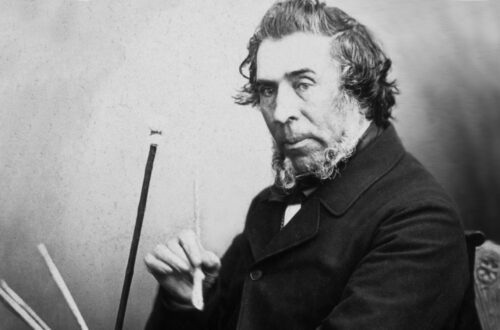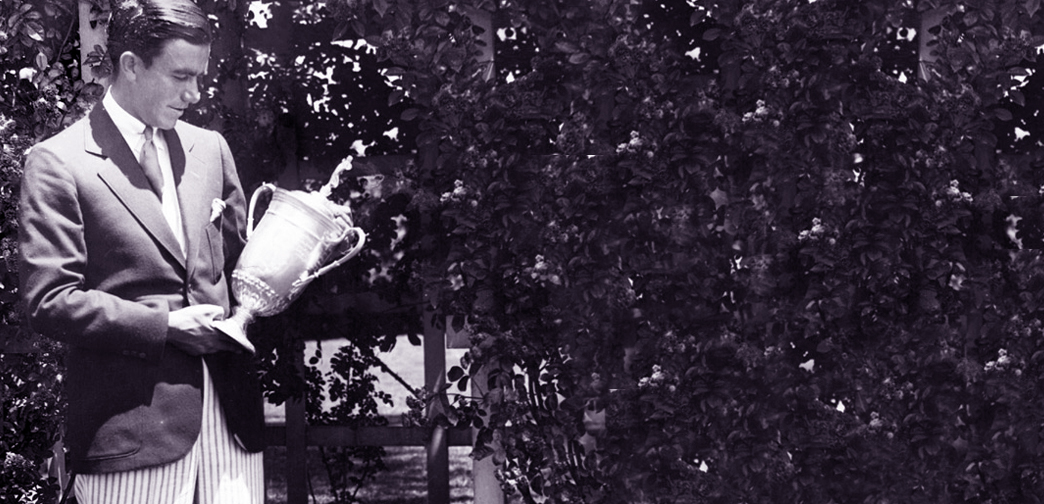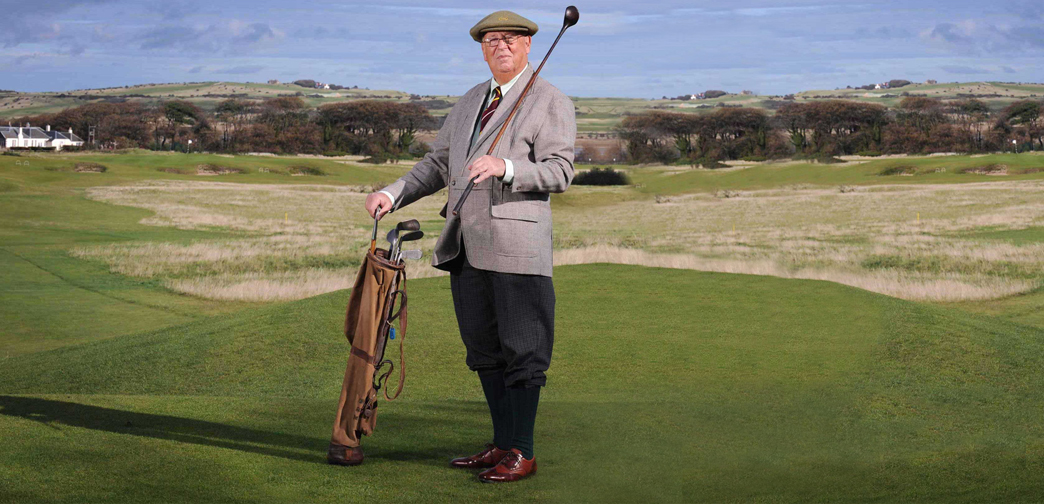What’s in a Name … the Club Professional’s Mark
Do you wonder who that person is whose name is on the back of your hickory clubs? No, I don’t mean T. Stewart or George Nicoll whose names are well known and well documented. I mean the other names: names like Joe Sylvester, R. Johnstone, Jos. Jefferson, R. W. Ball, J. Dagleish, and myriad others. You already know that, in most cases, these are the names of club professionals, some famous but mostly obscure.
These club professionals would import clubs from clubmakers like Stewart and Nicoll and then stamp their own names onto the club heads before matching them to hickory shafts which they then offered for sale to their members. In other cases they crafted the clubs themselves, often woods and putters, and stamped them accordingly.
But who were they exactly? What clubs/courses were they associated with? What’s their story?
A club professional during the early part of the 20th century wore many hats: he was an instructor, a salesman, a club maker, a course architect, a caddy master, a greenskeeper, all rolled into one. Many were transplants from Scotland and England who found opportunities in America as America itself discovered golf.
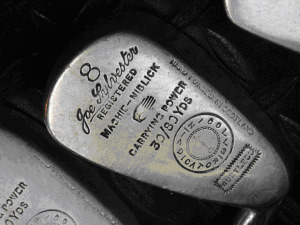
In researching that name on your club, you may find stories, some tragic, some comical, and others inspirational. One such story is that of Joe Sylvester, a club pro from New York.
Sylvester was born in New York in 1891, the son of Italian immigrants Alfonso and Philomena Sylvester. Alfonso worked at a factory making pianos. Somehow, Sylvester, the son of a poor immigrant who presumably had no background in golf, eventually became a club professional at St. Albans Country Club (now defunct) in Queens, N.Y. from 1915 to 1938.
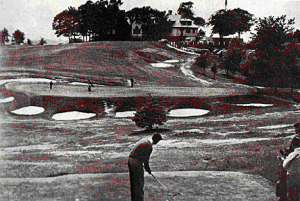
It is an intriguing story, not the least because Sylvester was of Italian ancestry in a day when most club professionals were Scottish. The story of a poor laborer’s son becoming a golf pro is reminiscent of Francis Ouimet. But how, exactly, Joe got into golf will always remain a mystery. He was good, though. Good enough to move up to club professional at Pomonok Country Club (also defunct) in Queens from 1938 to 1949.
And like Francis Ouimet, Joe Sylvester, only two years older, played in the 1913 U.S. Open at the Country Club in Brookline. He finished tied for 45th. He would play in three more U.S. Opens from 1915 to 1923 with his best finish being 24th. Sylvester competed in many other tournaments in his career.
A report from the Brooklyn Daily Eagle on Nov. 29, 1918, said that Sylvester was shot in the calf while fighting in France. The report said that Sylvester did not think the wound would affect his professional career and that he had done more teaching than playing since his 1913 appearance at Brookline.
In 1936 he was paired with Babe Ruth in a pro-am best-ball tournament at the Rockville Country Club in Long Island. The reporter said that Sylvester’s game suffered as he was “distracted” by the large crowds that followed Ruth.
Finally, In a story that is comical, sad, and yet inspirational (for there is a side story of a one armed golfer in the field who qualified), here is a New York Times article from July, 31, 1919 as Joe attempted to qualify for the PGA Championship at the Shakamaxon links in New Jersey:
Many Upsets Mark Shakamaxon Golf
McNamara Leads Field of Pros with 154 – Several Notables Fail to QualifyThere was weeping and wailing and gnashing of teeth yesterday at the Shackamaxon links, where Tom McNamara of Siwanoy led the field in the sectional qualifying round for the Professional Golfers’ Association championship. Seventeen different reasons were brought forward for the burnt-up greens that sent the scores skyward, but none seemed to satisfy the many well-known golfers who failed to figure in the select twelve to survive for the match play rounds over the Engineers’ Club links next month. McNamara’s morning round of 80, coupled with a fine 74 in the afternoon, won by two strokes over the field, with a total of 154 strokes.
The tournament proved one of the worst upsets that metropolitan golf has ever witnessed. Willie Macfarlane of Port Washington, semi-finalist in the last championship at Siwanoy, failed even to qualify. George McLean, the Great Neck pro, also a leading figure at Siwanoy in 1916, fell by the wayside and putting green. Isaac Mackie, Herbert Strong, Jimmie Ferguson, and Peter O’Hara were among those stray sheep who should have finished up among the leaders and who were lost beyond all hope of redemption by the speed and nonchalance with which the ball bounded by the cup on the green.
On the other hand, some of those who did qualify played very fine golf, notably Louis Martucci of White Beaches. The one-armed golfer performed so well that a lot of witnesses, who have more ambition than skill at golf, vowed that they would amputate an arm just as soon as they could get their courage to the sticking point. Martucci went out in 41 and came back in 39 for an 80 in the morning, and in the afternoon he went it one stroke better for a 79, with a total of 159. This placed him in a tie for fourth place with Tom Kerrigan of Siwanoy and George Fotheringham of Glen Cove.
Tom Boyd of Fox Hills played steady golf throughout, with rounds of 79 and 77 for a total of 156 and second place, but the real surprise was put over when John Bredemus, the former amateur golfer of the New York Golf Club, flashed to the fore in the second round with a 76 that gave him 157 for the thirty-six holes and third place in the tournament. Jack Hobens, the Englewood veteran, led the field in the morning with a 74, but in the afternoon he literally played ducks and drakes with his score and chances, as he was in and out of the water several times. His putting, like that of all the others, was a thing of horror, and he had a hard time to qualify.
The real hard luck of the tournament, however, fell to Joe Sylvester of St. Albans, who came to the seventeenth hole in the second round with a 3 and a 4, par figures, to tie Tommie McNamara for first place. The seventeenth is a water hole, with a long carry to the green and woods on the left. Sylvester hooked into the sylvan shades and was unlucky enough to find his ball. He advanced into the thickets with desperation and a niblick. At the first crashing sound the gallery looked for the ball to come out, but in vain. A second crashing blow, and still no ball. Sylvester then discovered that the obstinate pellet had moved forward to the edge of the woods and lodged itself in a deep hole. He took two more ineffectual shots at it there and found it was sinking by the head. Each shot at this point was costing him about $10, as his share of the prize money was melting away at this rate. Finally an excavating shot that rivaled the prowess of a steam shovel got it up on the green, and three comfortable putts gave him a 9 for the hole. Three putts and a missed second on the home hole gave him a 6, and he was lucky to qualify with an 82, when he should have been tied for first place.
I want that to be my epitaph: “He comfortably three-putted for a nine.”
– Martin Pool, Kenmore, WA
Feb. 14, 2014
Note: the original article and final leaderboard may be found here: http://query.nytimes.com/mem/archive-free/pdf?res=F30616FE3C5C147A93C3AA178CD85F4D8185F9





